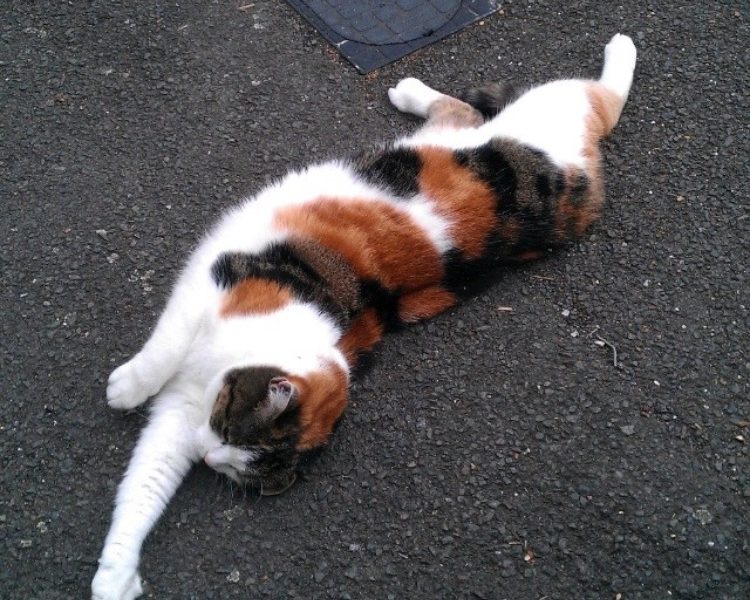
Sweets, Cats and Kitchens: My experience cataloguing the TIHR archive material
On a blue skied Monday in July I made my way to Euston station to join Elena Carter, the Tavistock Institute of Human Relation’s (TIHR) archivist, at the Wellcome Trust. This was the first day of my short placement where I was helping to catalogue the remaining registered document series reports (SA/TIH/B/1) before they were released in early September. As an apprentice at the TIHR opportunities come in a variety of places and as a member of the archive project team it seemed appropriate that I would be able to interact with the material and learn more about how the TIHR became what I now know it to be.
Most of the material I came across were reports on the attitudes of consumers in the 1960s. Isabel Menzies Lyth wrote a report on the study of children’s attitudes and behaviour patterns in relation to sweet eating. An extract I found most interesting, relating to the behaviour of adolescents:
“Sweets are given as an expression of friendship and affection. The girl judges the boy as a person and his relation with her by the kind of sweets he buys and how he gives them. She judges his generosity, his taste, his knowledge and experience. In return the boy judges the girl according to how she receives the sweets, her appreciation and gratitude, her greed or generosity in sharing the sweets with him while they are together and so on. Both make judgements of how the other eats the sweets, e.g. about greed or restraint, manners, mouth movements and their meaning. Particularly towards the end of adolescence, these judgements about sexuality and the suitability of the boyfriend or girlfriend for a more permanent and stable relation, at least for ‘going steady’ if not yet for marriage. The partner’s relation with sweets is unconsciously taken as a kind of prototype of his or her sexual behaviour and general attitude to life”.
From being able to see the contents of the reports I gained an insight on how diverse the material is, from Isabel Menzies Lyth evaluating sweets to Fred Emerys‘ findings during a discussion group on ‘the Matters Affecting the Feeding of Cats’, (which included comparisons between dogs and cats – “the cat is concerned with behaviours that suit its needs; unlike a dog it does not seek the pleasure of producing a look of pleasure in its master.”).This experience has helped me develop a more personal relationship with the project and the TIHR as a whole. The apprenticeship scheme exists to give young people access to the social science field and being able to see how it has evolved through the TIHR’s work has been invaluable to the development of myself in my role.
Whilst at the Wellcome, aside from getting ridiculously excited about pushing trolleys around the special collections store, I also spent some time creating authority files; profiles that give information about past TIHR employees. This entailed delving into the corners of the World Wide Web and using as many resources as possible to gather research on the key figures that have emerged from the material that Elena is cataloguing. Carrying out my investigations I came across an article on Elizabeth Linden Hilgendorf that was written after the TIHR published a report on ‘the Psychological Dynamics of Smoking’ and it contained a lovely narrative of her life up until that point. How she had a passion for singing, worked for the Institute for Research in Communications whilst residing in Athens and eventually moved into Sir Emery Walker’s* kitchen. Rather ironic in view of Linden’s reasons for leaving Greece, (“the attitude towards women is still archaic, the men won’t accept a girl as an intellectual equal”,) the article is full of subtle sexist remarks. The writer describes Linden as a ‘hazel-eyed brownette with short, wavy hair and an infectious smile’ and at the beginning remarks that ‘the psychology of smoking and industrial democracy might seem two unlikely subjects to interest a pretty Australian girl who used to sing in a French restaurant in Melbourne.’ Despite the use of language being unsurprising to the time the article was published, discrimination towards women at work is still very prevalent, the Gender Pay Gap, one of the TIHR’s current projects, for example.
The reports have shown me correlations between now and then, the language use may be different but the deep seated issues are still seen today.
* Sir Emery Walker was an English engraver, photographer and printer. He was a socialist and friend of William Morris and played a key role in the Arts and Crafts movement. His house, 7 Hammersmith Terrace, has been made into a historic museum run by the Emery Walker Trust.